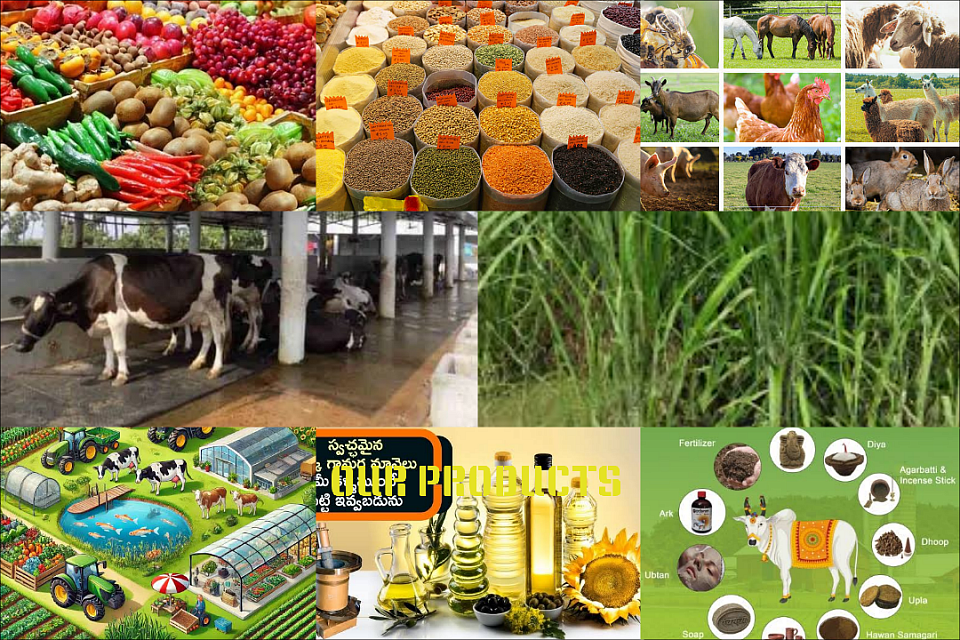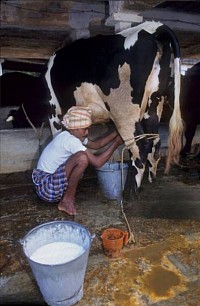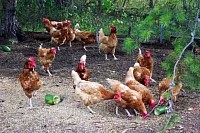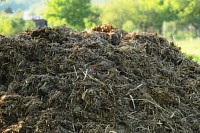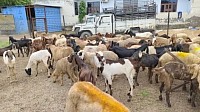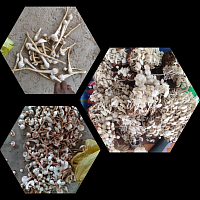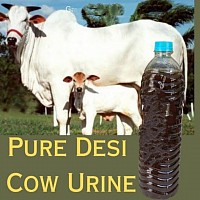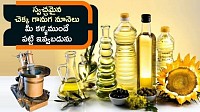Our Products
Agricultural farm products include food items like cereals, fruits, vegetables, meat, milk, and eggs; fibers such as cotton and jute; fuels like wood; and raw materials like rubber, wool, and oilseeds. Farming operations can be categorized by their primary product, such as grain and oilseed farms, fruit and nut farms, dairy farms, or beef cattle farms. The output of these farms provides essential food and raw materials for various industries.
Types of Agricultural Farm Products
Food Crops: This category includes:
Cereals and Grains: Wheat, rice, corn, and other grains.
Fruits: A broad category including various types of fruit.
Vegetables: All forms of vegetables, including melons.
Pulses: Various pulses and lentils are a significant product in India.
Livestock and Animal Products:
Dairy: Milk and products derived from it, such as cheese, butter, and yogurt.
Meat: Products from cattle, pigs, poultry, and other livestock.
Eggs: From poultry and other birds.
Fibers: Materials for textiles, such as cotton and jute.
Oilseeds: Plants grown for their oil content.
Nursery Plants: Plants grown in a nursery for sale.
Ornamental and Flower Crops: Flowers and other decorative plants.
Examples of Farm Operations by Product
Grain and Oilseed Farms: Focus on the cultivation of grains and oil-producing crops.
Fruit and Nut Farms: Specialize in growing fruits and nuts.
Dairy Farms: Primarily raise cattle or other mammals for their milk.
Beef Cattle Farms: Ranch and farm beef cattle for their meat.
SUPER NAPIER Grass
Super Napier grass, also known as Pakchong grass, is a hybrid variety of Napier grass developed from a cross between elephant grass and pearl millet, prized for its high yield of nutritious, protein-rich fodder. It offers a high crude protein content (16-18%), grows rapidly, and can be harvested multiple times a year, making it an excellent and efficient feed source for livestock like cows, goats, and sheep.
Cattle Diary Milk
Dairy milk farming village is a rural community focused on raising cattle (like cows and buffalo) for milk production, often incorporating traditional methods and local resources within a close-knit, community-based structure. These villages typically feature a collection of small family farms, where land, shelter, and animal care are organized to supply milk for local consumption or for sale to larger dairy cooperatives and businesses
Chicken Hens farming ( Natukodi farming )
Natukodi farming village is a community where the local, indigenous variety of country chicken, known as Natukodi, is raised, often in a free-range system where chickens roam in orchards or agricultural fields during the day and are housed at night, providing a dual benefit to farmers by reducing pests and providing natural fertilizer while producing a popular, high-demand product. These villages often integrate Natukodi farming with other agricultural activities, capitalizing on the low-cost, natural lifestyle of the birds to enhance farm productivity and generate income from the birds and their eggs.
All Cattle Dung
Cattle dung farming is a sustainable practice where cow dung is utilized to create valuable products, including organic fertilizers, biogas for energy, and natural pesticides. Dung provides essential nutrients like nitrogen, phosphorus, and potassium, improving soil fertility and structure, while cow urine can act as a natural pesticide. By incorporating these resources, farmers can reduce their reliance on synthetic inputs, promoting a more environmentally friendly and sustainable agricultural system.
Goat & Sheep Farming
A "mixed goat sheep farming village" is a rural community where farmers raise both goats and sheep, a common practice in places like India and other parts of the world, to produce milk, meat, and wool. These integrated farming systems leverage the different grazing habits and needs of each species, allowing for more efficient land use and a diversified farm income.
Mushroom Farming
The "best" mushroom for farming depends on climate, market demand, and growing conditions, with Oyster mushrooms often recommended for beginners due to their ease of cultivation, wide temperature tolerance, and faster growth. Button mushrooms are the most commercially produced in India, but require cooler, winter conditions and more complex composting techniques. Other popular options include Paddy Straw mushrooms, which thrive in hot, tropical temperatures, and specialty mushrooms like Lion's Mane and Shiitake for gourmet markets.
Pure Cow Urine
Cow urine products, or Gomutra, include Gomutra Ark (distilled cow urine), which is sold for its purported traditional health and religious uses, and products like cow urine soaps and lip balms that incorporate cow urine for its perceived properties. While some traditional texts and cultural practices in India revere Gomutra for its medicinal and purifying qualities, and even suggest its consumption for improving health or use in rituals, there is limited scientific evidence to support these claims for humans.
Cow Dung Products
Cow dung products include natural fertilizers and soil conditioners, such as manure and vermicompost; fuel, including dried cakes and pellets; and various spiritual items like incense sticks, diyas, and idols. It's also used to make organic pesticides and is a component of eco-friendly crafts and home decor.
Cow Dung Products: The Future of Organic Farming & Natural Fertilizers · 1. Cow Dung Fertilizer · 2. Cow Dung Powder · 3. Cow Dung Cake · 1. Improves Soil etc....
Ganuga oil, cold-pressed
Ganuga oils are cold-pressed groundnut oils extracted using traditional wooden presses (kolhus or ghanis), a method that preserves their natural nutrients, aroma, and flavor by avoiding heat and chemicals. Also known as Kachi Ghani oil or ghani oil, it's rich in monounsaturated fats, Vitamin E, and antioxidants, making it a healthy choice for frying, sautéing, and other everyday cooking.
